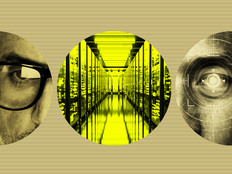Key Steps to Achieve Green IT
The Department of Energy's efforts to take the lead among federal agencies as they "go green" are a natural extension of its work in alternative energy and the management of legacy resources. This concept can be seen in action at the department's Savannah River Site (SRS).
SRS has a history of national service. From its beginning in the 1950s, SRS has provided knowledge, technology and integrated solutions for pressing national needs. The 310-square-mile facility near Aiken, S.C., has pioneered the development and deployment of nuclear technologies. Achieving that success has required massive investment, extreme personal sacrifice and numerous innovations. The site remains proactive in its efforts toward environmental stewardship, clean energy and national security.
A First Step
The SRS Green IT initiative began in 2010 with the first step of examining the baseline. The project employed "retro-commissioning" — a documented, systematic process to identify, implement and test existing facilities to optimize usage. The process began with efforts to balance capacity and load to minimize energy use and reduce operational costs.
The methodology deployed within the data center environment laid the foundation for further improvements at Savannah River Site (under way in 2011) and will set the pace for other efforts throughout the complex.
These efforts were recognized earlier this year at the Energy Department's Information Management Conference, where SRS received awards for green IT initiatives, business modernization and leadership collaboration.
The Next Step
After the site completed physical upgrades and remodeling, virtualization and data center consolidation were next. The size of the site made it suitable for server consolidation, and virtualization reduced costs as well as the facility's IT footprint.
The key to success was to ensure sustained service levels for users during these changes. The effort delivered financial benefits, a reduced carbon footprint, and improved service delivery and reliability for the site's application portfolio. Other initiatives, such as the Business Systems Modernization project, yielded results beyond expectations through the retirement of more than 30 applications and two legacy mainframes. Virtualization provided cybersecurity improvements and reduced manpower requirements for operation.
The big news: SRS is now able to do more with less while reducing the impact on the site's local community and ecology.
The energy savings have been significant. Even more exciting is the fact that the project is not done yet.
SRS has virtualized a little more than a third of the facility's storage environment and about 40 percent of its servers. The goal is to achieve, to the extent possible, an entirely virtualized environment.
Keys to Success
SRS did not reinvent the wheel but instead worked with other Department of Energy sites, commercial entities and research facilities to use lessons learned by other experts in this field. Agencies within Energy make a serious effort to share information and best practices with one another, and the SRS staff has been able to apply those lessons to improve the facility's operations.
Improved airflow management and more stringent hot-and-cold-aisle configurations are some of the basic steps SRS took to improve energy efficiency in any data center. A change in floor tiles based on lessons learned improved the airflow in the SRS facility and helped to improve cooling efficiency, reducing the energy requirement.
Coming Next
The addition of sensors to the data center will support more in-depth monitoring, helping to identify potential temperature problems so that the IT team can avert crises before they occur and rapidly identify new areas of opportunity.
Client virtualization could yield benefits to rival server virtualization when it comes to footprint reduction. Lower end-user systems cost, improved standÂardization and increased security are all benefits of client virtualization. Mobile devices such as tablets offer added opportunities to deliver functionality while improving the user's experience, and will bring the power of the technology to work in the field.
The Energy Department is examining how it can implement cloud computing. At SRS, moving some of our applications to the cloud could further shrink our data center footprint, reduce our environmental impact and save money on application development.






